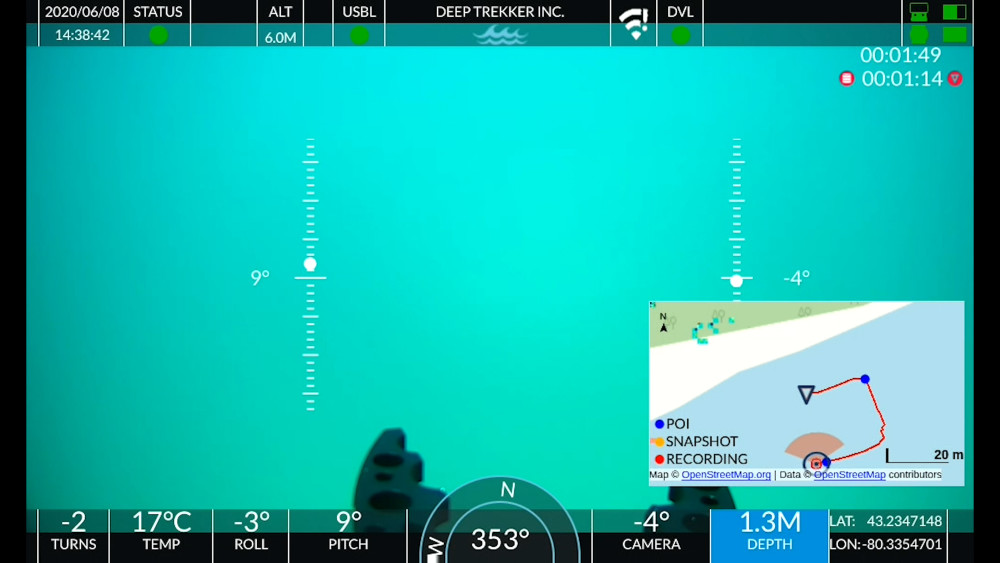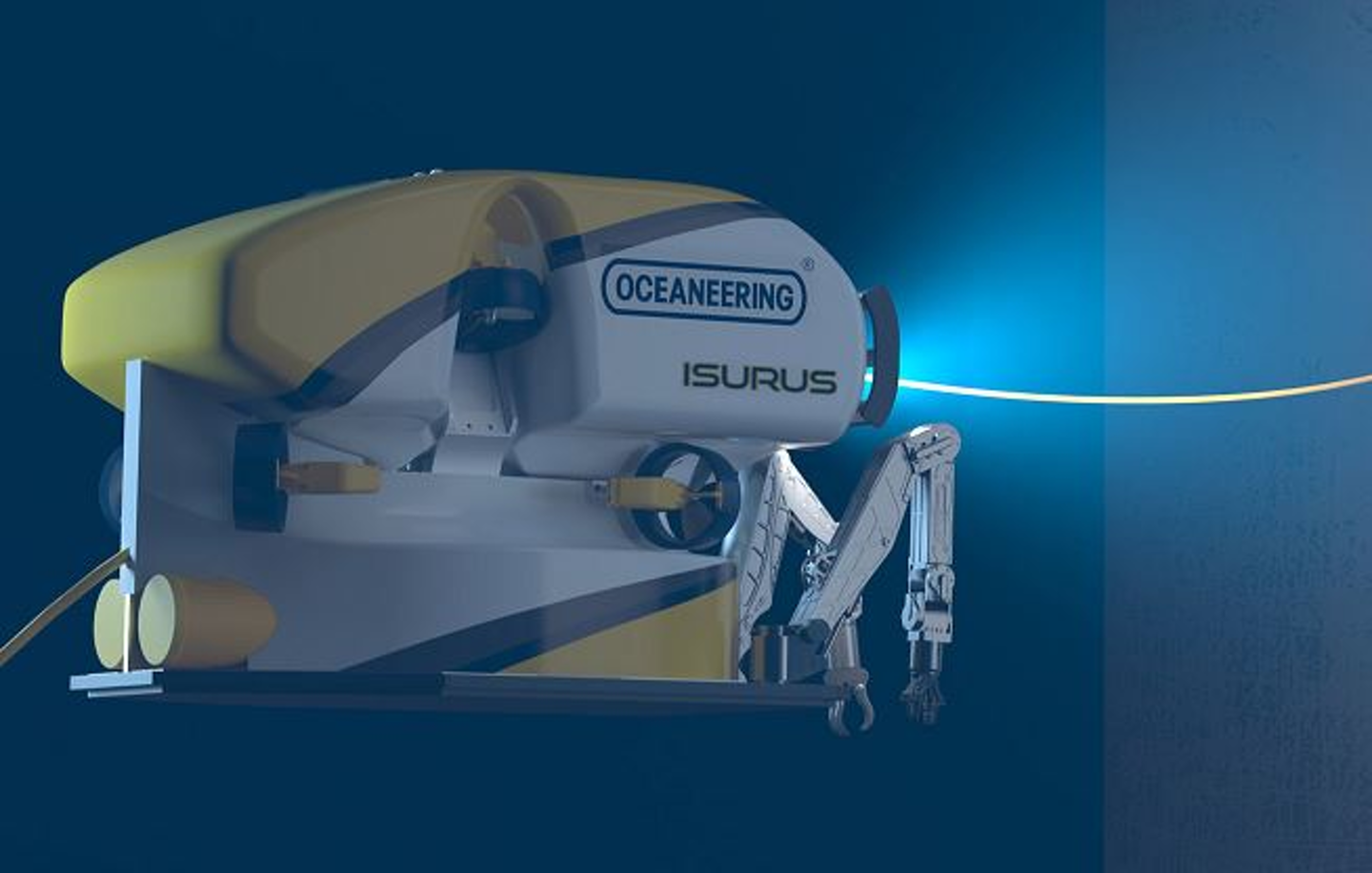Home › Forums › ROV › ROV Technical Discussions › Which micro ROV? › Reply To: Which micro ROV?
Yeah yeah…post #1 for me. New to the board but hopefully not for long.
Figured I would weigh in here…I own both a SeaBotix LBV 200L and I recently took delivery of a VideoRay Pro4 system after working with a Pro3 GTO on and off for the past twelve months.
I shifted to the Pro4 after being an LBV owner for about 3 years. The following is a discussion I drew up for someone about my experiences with both systems, and hopefully folks take it with a grain of salt because, unfortunately, it is possible for ANYONE to have a bad experience with any given system. In my case, I just found myself having more GOOD experiences with VideoRay, so I shifted gears.
Performance
Thruster Power/Maneuverability: Initially, I was a big fan of the LBV with its reported thruster power, lateral thruster, video over fiber, and LED lighting. One of the first jobs I did with it was a pipeline inspection that was several hundred feet long, and it performed rather well. But, the more I used both systems, I found that the thruster power isn’t all its cracked up to be when compared with how it actually controls the vehicle, and the lateral thruster does very little but offer a mode of failure. The LBV pretty much handles like a pig in current, because the sail area of the machine is such that as soon as you lose the head of the vehicle (ie, the current turns you broadside), the brushless DC thrusters on the LBV 200 don’t have the guts to pivot all of that sail area on the vehicle back into the current.
And, while the lateral thruster is fine for performing lateral crabbing in still water, it is useless in open water on applications such as UWILD inspections. Yes, the LBV umbilical is thinner diameter, creating less drag. But operationally in most situations this really isn’t an issue because there are ways to easily level the playing field in regards to tether drag. If you couple these performance issues with the potential for thruster failure (either in the seals or the oil comps), then there are some serious reliability versus performance issues there.
Video: The video quality on the LBV (particularly the FOV variant), historically, has been superior to the VideoRay but they are making advances by using better cameras, better video drivers and better lights that will allow comparable video quality without the liability posed by fiber-optic tethers. And, while the internal LEDs on the LBV are fine, the external LEDs are unreliable; and now, VideoRay has made the shift to a very bright, efficient set of LEDs that really levels the playing field. You can overcome certain video quality issues when you have outstanding lighting…I know this quite well, based on my experience with the Nuytco NewtSun LED array…the cover shot on the July-August 2009 issue of Ocean News and Technology is a testimony to this lesson learned.
Sensors: As for sensors…the depth and temperature sensors leave a lot to be desired, as does the compass. But many of these sensors on ROVs in general leave a lot to be desired, and it’s only recently that VideoRay started using a really good depth sensor and compass. These new depth sensors and heading/pitch/roll sensors on the Pro4, actually, are very good. Very precise, very stable.
Auxiliaries/Additional Sensors: Integration of auxiliary systems to the LBV are an interesting subject. My LBV delivered with the potted whip for the Tritech Micron. That Tritech whip is not a cheap whip. To permanently pot the whip to the subsea housing is fundamentally NOT industry standard, because it permanently dedicates that RS-233 port to the Micron only.
Any other sub out there would have a subsea bulkhead fitting (like an Impulse connector or a Subconn) potted to the subsea can, and then the user could splice their own whips without factory intervention. For me, the only options I had to get that RS-232 capability freed up would be to cut-into the Micron whip and splice my own subconn, or to send the sub back to SeaBotix (at my cost) and have SeaBotix do it the right way (again, at my cost). I say "the right way" because there is no reasonable explanation for potting the dedicated whip directly into the housing. I ended up doing the splice myself to give myself access to the RS-232 channel for other tools. Right now, the system is on hire with a buddy of mine, who ended up installing a proper low-profile bulkhead connector for the RS-232 line and an additional low-profile bulkhead connector to jumper into the video line for the low-light B&W camera (he wanted to use a different external video camera for a specific application).
So I guess my point on integration is that the system should be alot more customer-friendly when it comes to accessory integration. If I want a Blueview, I should be able to order one and have it plug-and-play…not require a send-back to the factory for another upgrade or capability addition.
Fiber Versus Copper: The other performance item relates to the fiber. Fiber umbilicals are great, but they can also be a huge liability. They are certainly industry standard offshore…but the offshore systems are using the fiber for a helluva lot more bandwidth than just video. And, they are on much more permanent or semi-permanent installations. I’ve developed my own opinion of fiber umbilicals (not so much by my use of the LBV200, but rather my experience with other systems), and I feel pretty comfortable in saying that they aren’t right for me and my service line, my operations, that sort of thing. If you aren’t getting full bandwidth out of the fiber (on the order of a channel or two of video, several RS-232 channels at 115K each, and a few RS-485 channels), then it is pretty much a liability that isn’t worth the risk associated with it. This isn’t so much a criticism of the LBV 200, except that having the liability of fiber damage just to get 850 feet of decent video isn’t really something that is on my sonar screen anymore. These small machines get the snot knocked out of them…and that is just limited to the sub, but the umbilical as well. So you need to ask yourself whether that fiber umbilical is something you really need.
Reliability
In the few years that I had either my original LBV 150 or my LBV 200, I had a host of issues:
(1) Video Overlay Board failure
(2) Depth/Temperature Sensor Failure
(3) Brushed Thruster Failures
(4 )Brushless Thruster Near Failure (failure on oil compensating bladders, almost had water intrusion)
(5) External Light System (ELS) Failure (three times: once with Halogens, twice with LEDs)
(6) LCD Panel Failure on ICC
These are failures on a system that hasn’t seen much heavy use. Rather, I have very little time on my LBV200 that has demonstrated inconsistent misbehavior in the system, and in turn caused me to lose a whole lot of confidence in the system and leave it on the rack in favor of that VideoRay Pro3 GTO I had available to me.
These were just the problems with my system. But, unfortunately, I also saw issues with the systems delivered to one of the major offshore ROV operators in the Gulf (this is a work-class crew, not an inspection-class outfit) when they were accepting delivery of their systems. Completely inoperable Micron Sonars and/or FSK Electronics components on brand-new systems. Thruster Failures (in the form of blades shearing to pieces) were inexplicable. I was floored that the factory supplied this operator with LBVs that, out of the box, were not operating at 100%. This further decimated my confidence in the system and left me wondering where I, as a small operator, might stand if a major operator couldn’t get their hands on good equipment. (Note: I’m not sure that the problems were in the Micron Sonars, but rather in the comms over the RS-232 port).
Engineering-Production-Delivery
This is a somewhat more nebulous concept…but it’s more of a catch-all. There seemed to be some kind of disconnect between the engineering of certain components and systems, and the production/delivery of those systems.
1. I’ll bring up the External Light System again. Something went wrong there. Interesting design. Bad production. I had so little hours on my ELSs, and I’ve seen complete failures on them. I don’t know where the problems are…and at this point, I don’t care. I just know that I paid for an ELS that has offered little capability but offered a fantastic mode of failure. They are a pain to install because getting access to the backplane isn’t easy and then threading the whips around the dome is fun, too. And to have them fail so easily is a disappointment.
2. The Micron-potted whip…never made sense to me. That is a comm port. It should be made available by putting a subconn on the end cap. Period. And if new machines are made that way, then existing customers with the potted whip should have been given the opportunity, free of charge, to have it modified properly.
3. The thruster blades on the offshore company’s machines. I piloted those machines on their first UWILD operations. Kort nozzles were on properly, but somehow during the inspection we wasted the blades and I lost control of the sub…the thrusters don’t do much when all that is left is a hub and a spinning shaft. I never learned of a reasonable explanation for that failure, but I can only assume that SeaBotix received a bad batch of thruster blades.
When I consider these things against the bad batch of chips on video overlay boards, bad supply = delays on brushless thruster motor controllers, bad depth/temperature sensors…it starts to seem like a pattern of poor QA/QC on the supply chain. Then you couple it with the bad ELS systems and if I’m wrong about these failures, I’d be happy to be corrected. But it just seemed like there has been some problem at SeaBotix between the engineering that would go into a system or component, and the ultimate production and delivery of the system to the customers.
Final Thoughts
Over the past year, I’ve been really fortunate because I had the opportunity to really, truly, test a new product in a variety of operational situations and make direct comparisons between the new product (the VideoRay Pro3 GTO) and my existing system (LBV 200). In just a year, I’ve been able to log more hours on that demo system (free of charge) than I have in total on my LBV200, with no failures. I beat the shit out of that VideoRay, and it continues to do the job it was advertised to do. If I want to add the Micron to it, I plug it in and it works. If I want to add a BlueView to it, I plug in the integration skid and I get gorgeous BlueView imagery. If I want to use a grabber, I mount it to the skid, plug it in, and go attach the vehicle to a drowning victim. Simple, with no headaches.
Now – on my Pro4 – the system is pretty strong. The Windows, GUI-based user interface is excellent. It takes a little getting used-to, but it offers alot of very nice information via a reasonably user-friendly interface. Plus, the software architecture is set up such that users can develop custom applications (for either hardware control or data display, or both). The sub is even more peppy than the Pro3 GTO, and the video is improved. The jury is out on the LED lights, but I need to do more testing with it to make my decision on that front.
One of the criticisms of the VideoRay units, historically, has been that the vertical thruster was very weak. And, compared to the SeaBotix LBV, it was. Let’s face it – SeaBotix puts one (and on some models, two) of their full-sized brushless thrusters in for the vertical thruster. On the VideoRay, it was a tiny thruster that was seriously under-gunned. However, on the newer Pro4 models, VideoRay has improved the vertical thruster by using a strong motor, larger thruster, and also working with the float-block assembly to better direct the thrust along the main pressure hull. Is the vertical thrust capability on the VideoRay where the SeaBotix is? Eh…pretty close. But it’s not that big a deal really. Considering the apparent improved reliability, the strong performance, the scalability, and the slick user interface, my money (obviously) goes with the VideoRay.



